Writing for Computer Science
Author Justin Zobel
--------------------------------------
Here is the amazon.com page for all information on this excellent book, as well as readers reviews.
--------------------------------------
My roots are in computer science where I started my professional life. Therefore I was attracted by the title. I borrowed the book from the library and read it from cover to cover. I found myself using my yellow highlighter pen on the text of quite a few chapters.
The pertinence of the examples chosen proves that Justin has reviewed his fair share of papers. If you referee papers, chapter twelve on "Refereeing" is for you. If you are in computer science or if you use computers in your research, then chapter 5 ("Mathematics"), 7 ("Algorithms"), and 11 (Experimentation") are written specifically for you.
Scientists outside of computer science are not left out. Chapters two to four are about style and grammar. His examples will often bring a smile to your face as you recognize your own mistakes. I cannot say I always agree with Justin's examples. For example page 32, he writes "Beginning a paper by stating that a topic is popular or that a problem is important is flat and uninspiring (I could not agree more); he then illustrates such a flat start with the great example "Use of digital libraries is increasingly common". But then the "may well be preferable" example that follows has the same problem: "Digital libraries provide fast access to large numbers of documents". It uses two imprecise adjectives and does not enhance the knowledge of even the most junior researcher in computer science (see chapter 13 and 14 of "Scientific Writing: a Reader and Writer's guide" for more advice). It is easy to critique anyone's work, and I am sure mine deserves its fair share of criticism; Justin's book has the merit of systematically illustrating the principles of writing he recommends to the readers.
Chapter 6 on graphs, figures, and tables gives many examples. Justin believes in making figures "less dependent on the paper's text" (page 112) by making their caption more informative. I do too, and even go one step beyond his recommendation: make your figures, tables, and graphs stand-alone through a complete caption.
Chapter 9 gives general instructions for writing the various parts of a scientific paper, from its title to its conclusion.

